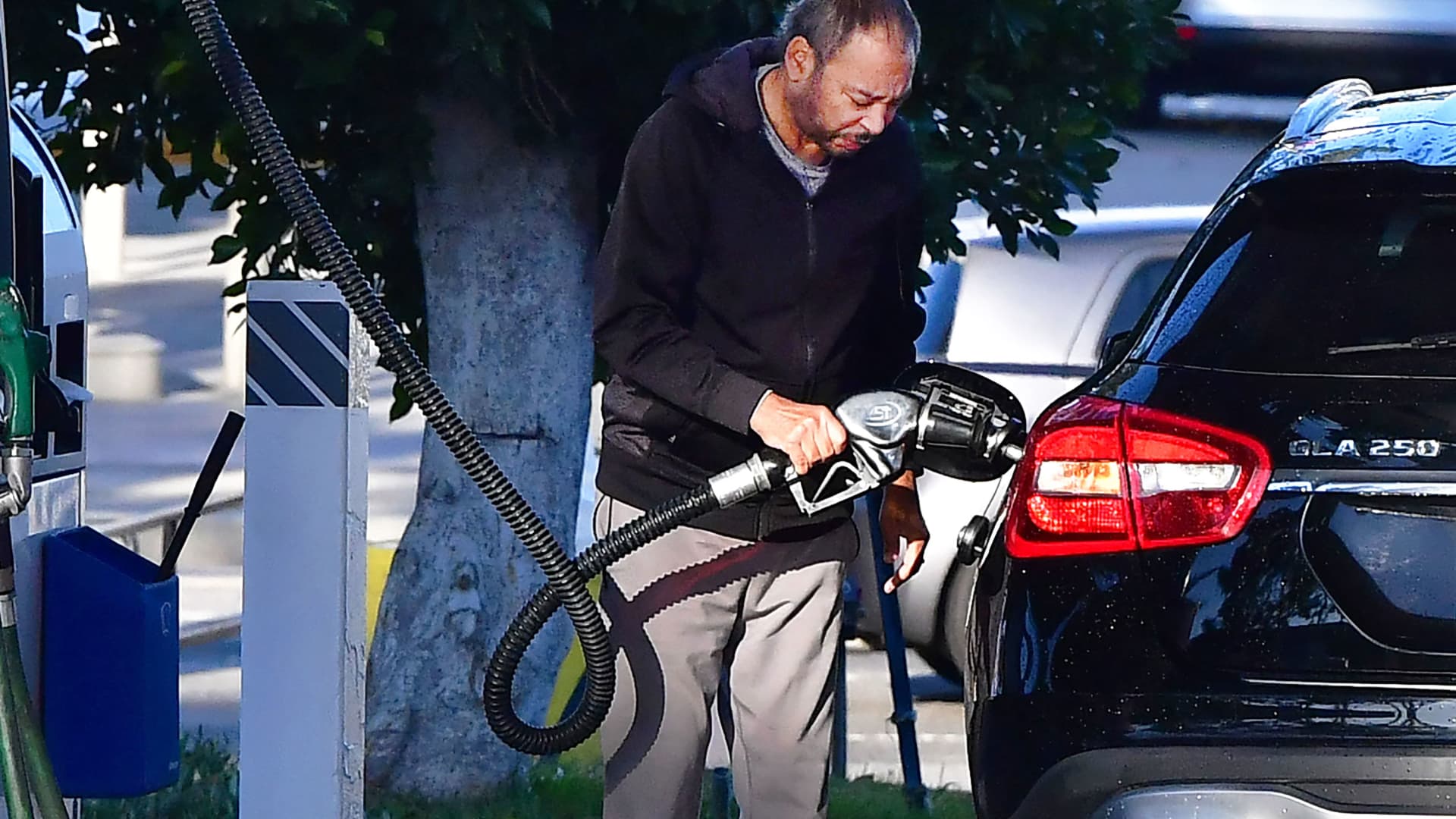It’s hard to escape high gas prices.
As Americans feel increased pressure at the pump, the average driver is spending 2.24% of their monthly income on gas, while pickup truck and SUV drivers shell out as much as 3.12%, on average, according to a recent report by FinanceBuzz based on data from the U.S. Department of Transportation, U.S. Census Bureau and AAA.
But depending on the state you live in, you may be more vulnerable to recent price spikes at the pump.
More from Personal Finance:
How states aim to tackle high gas prices
Why a federal gas tax holiday won’t save consumers much
Here’s how to reduce pain at the pump now
For example, in Alabama, where residents drive more than 1,000 miles a month on average but earn less than residents in most other states, drivers are spending more than 5% of their take-home pay on fuel — the highest percentage in the country. Wyoming is a close second at 4.9%.
Alternatively, in the District of Columbia and New York state, motorists travel much less — in part, thanks to extensive public transportation systems — and spend just 0.73% and 1.38%, respectively, of their monthly income on gas, FinanceBuzz found. Those are among the lowest percentages nationwide.
Nearly 75% of U.S. drivers said they are already suffering financially due to the high cost of fuel, according to a separate report by DebtHammer. (A separate NBC News poll also found 8 in 10 Americans worry the war between Russia and Ukraine will continue to increase gas prices.)
More than 25% of those polled by DebtHammer said they’re either racking up debt or can’t afford to pay a bill because of the extra money they’re spending on gas.
Another 44% said they’ve had to cut back in other areas, such as clothing and eating out, to offset the additional expense.
To combat the spike in energy costs nationwide, the White House said it will release 1 million barrels of oil per day from the nation’s strategic reserves.
The increased supply should help push prices down, since more than 50% of the cost of gasoline is based on the price of oil, according to the U.S. Energy Information Administration.
Already, the national average for a gallon of regular gasoline fell three cents last week to $4.15 but remains significantly higher than the $2.87 seen one year ago, AAA said.
Some states have also introduced “gas tax holidays” to ease the burden on drivers. Here’s a roundup of which states have enacted changes first, and which ones may follow.
As the summer driving season heats up and return-to-office plans get underway, here are a few other ways to protect yourself from unpredictable prices at the pump.
